After reading an essay about Tabasco sauce, getting a Sander Katz book as a present, and taking a class at Preserved Oakland, fermented hot sauce was on my mind, and I like how my first batch (a blend of 4-6 week fermented jalapenos, Jimmy Nardello sweet peppers, garlic, and spices) turned out. In photos:
Jimmy Nardellos submerged in an 4-5% concentration sea salt brine with a few hot thai chilis, garlic cloves, black peppercorns, corianted seed, and brown mustard seed:
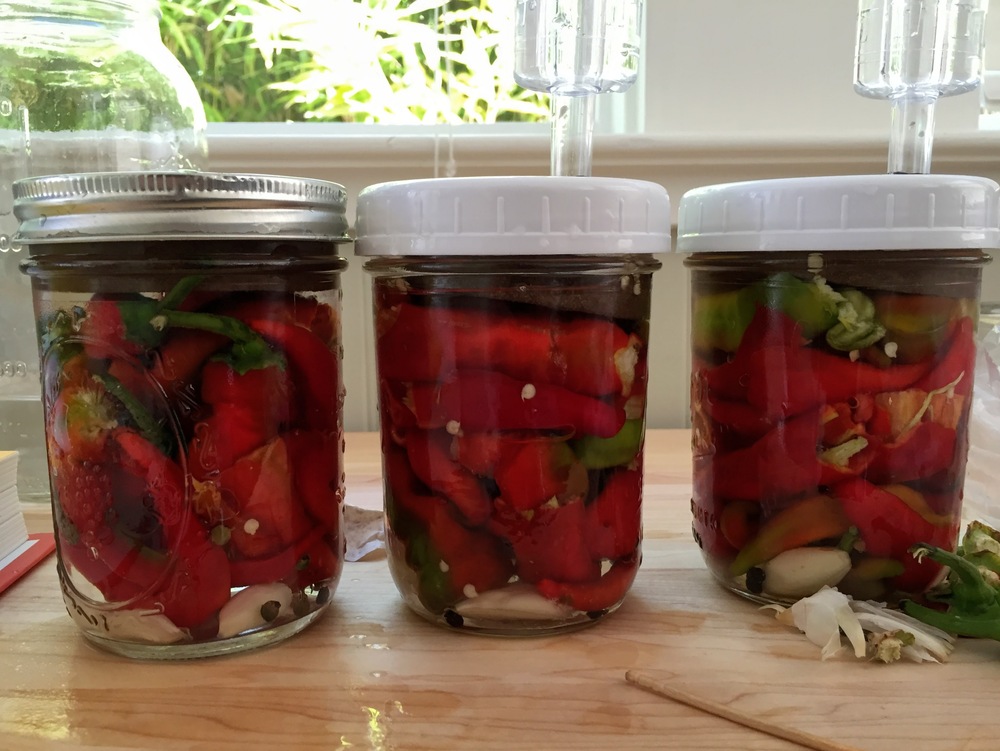
Jalapenos, a few cayennes, and garlic and peppercorns submerged in brine:
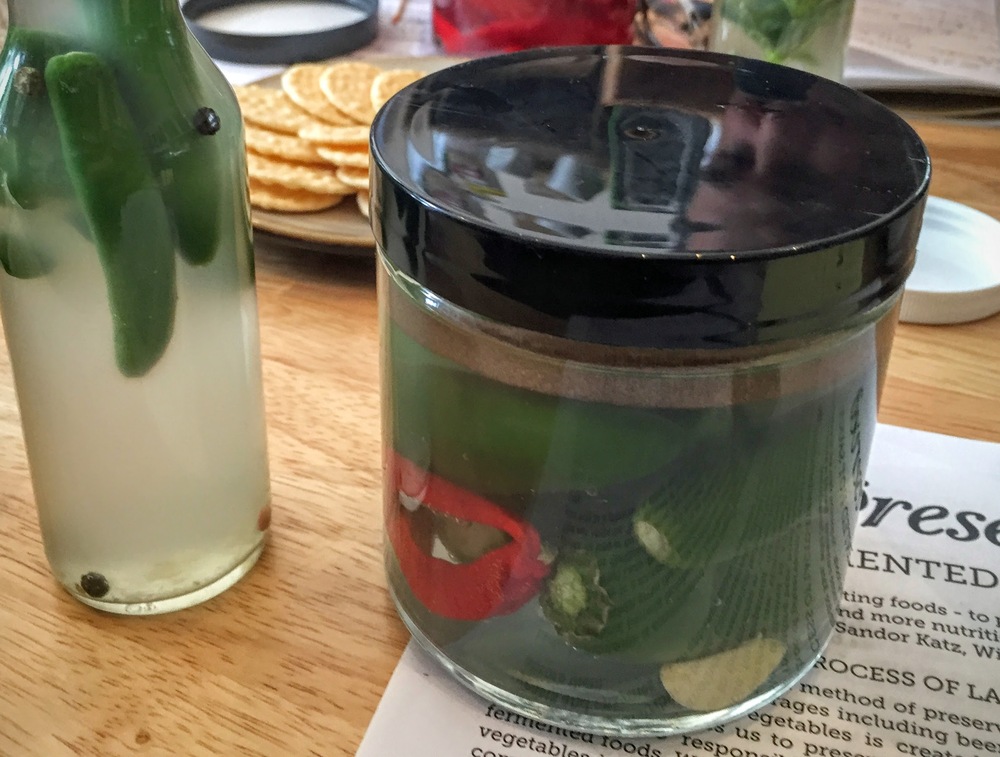
I left some peppers at room temperature for a few weeks, but also put some peppers in one of my temperature-controlled “fermentation fridges” (a mini-fridge retrofitted with a temperature controller, allowing me to hold it at 55-60F for a slow, long, 4-6 week fermentation even during warm weather). Also shown: a hard cider aging:
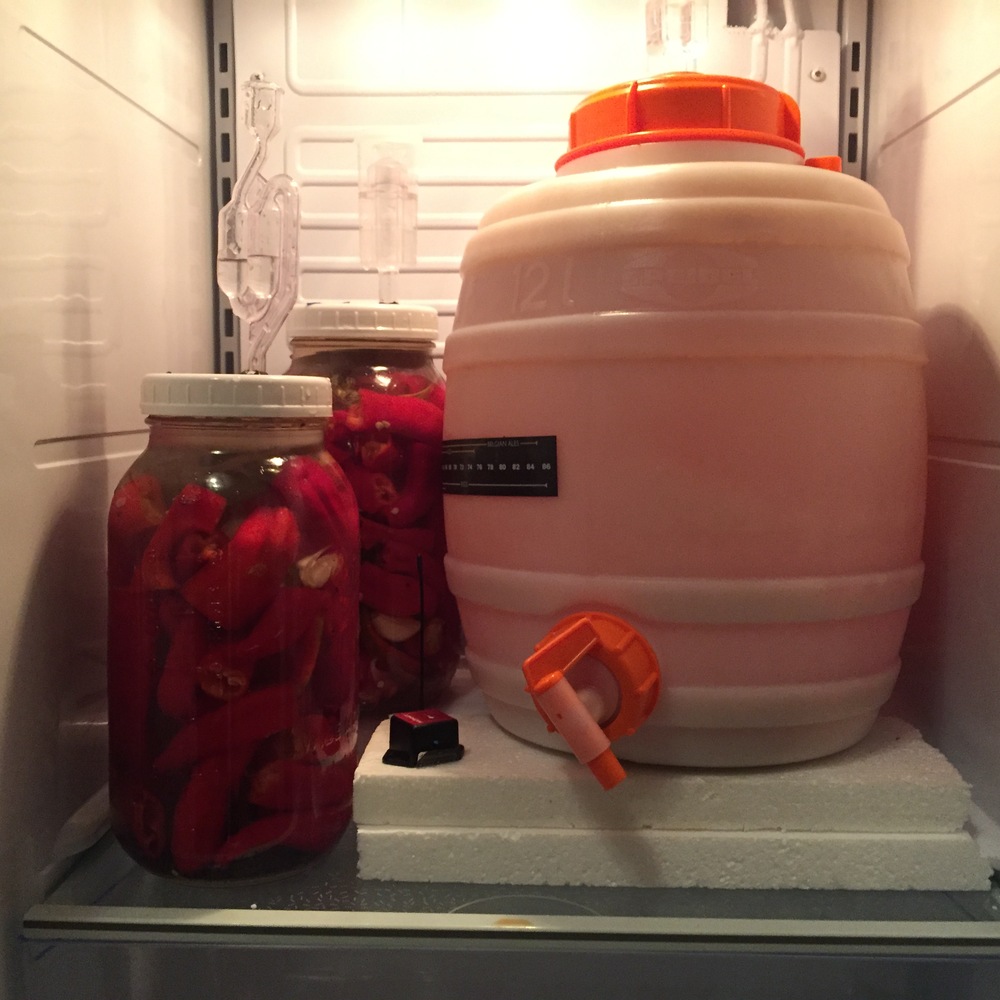
Blending the various peppers and garlic and a bit of the drained now-probiotic / live cultures brine to make a fermented chili paste (or in a few cases, to strain to make a thinner hot sauce):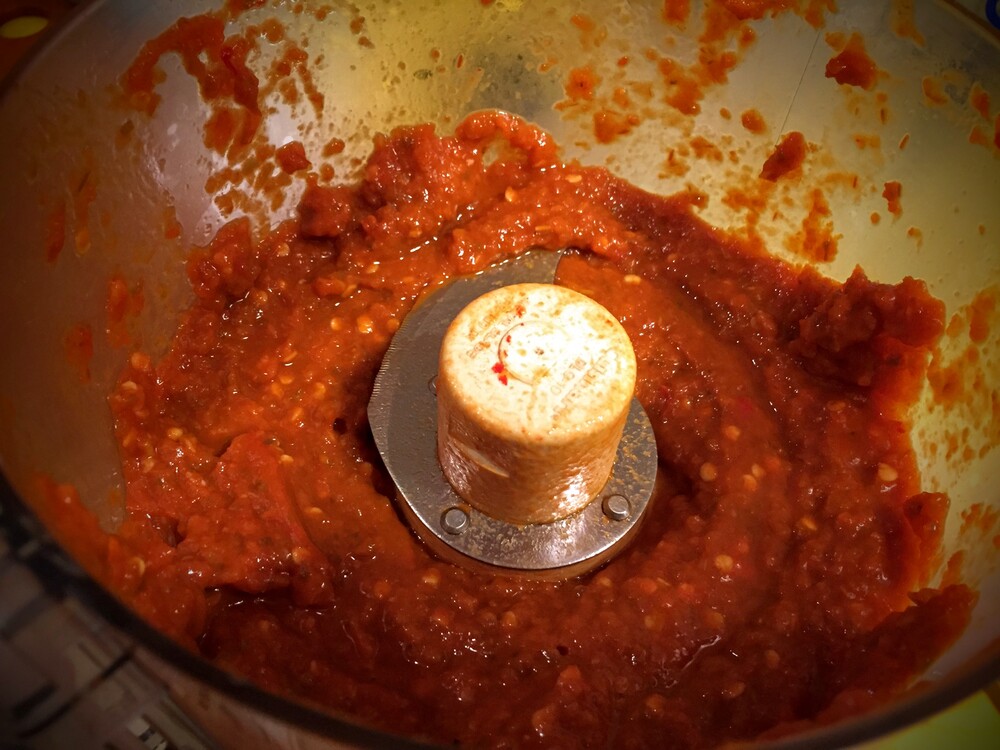
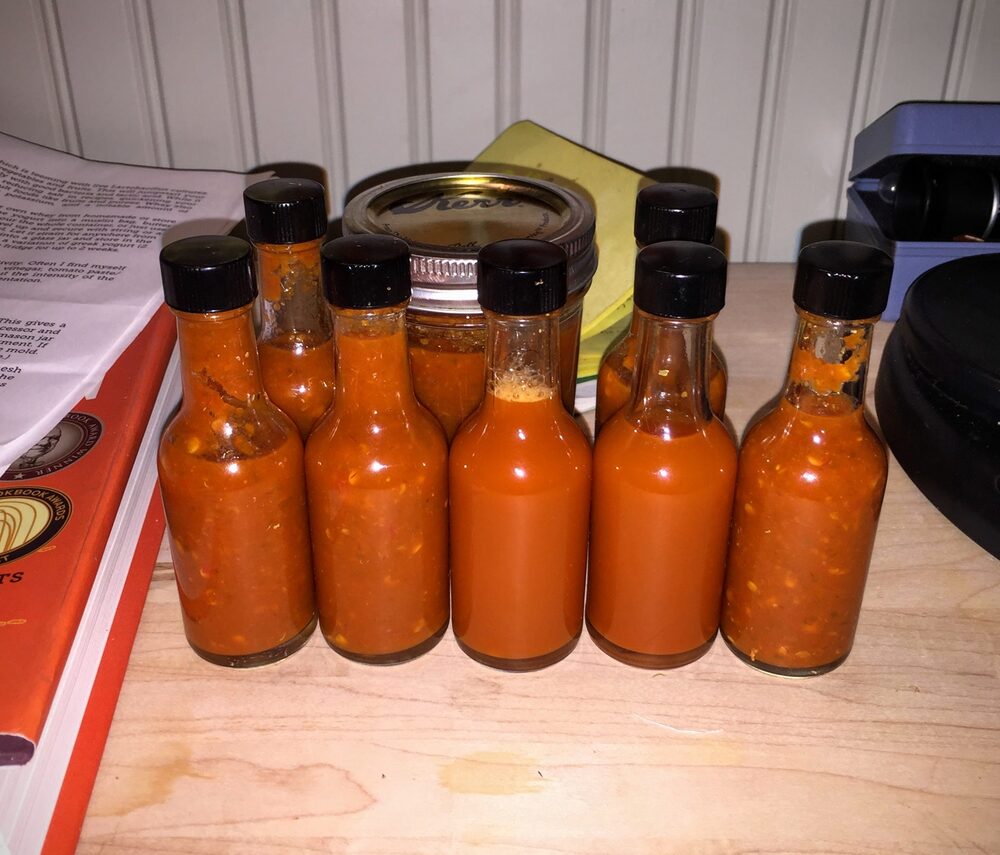 My understanding in more detail:
My understanding in more detail:
Traditionally, many cultures’ hot sauces were made through lacto-fermentation, the same general process behind sauerkraut, kimchi, half-sour pickles, and other live-cultured foods. Rather that using vinegar, this involves packing vegetables and spices in a salt brine, and letting a series of wild bacteria (most commonly from the skins of the vegetables) multiple and progressively transform the food and environment over the course of weeks to a few months.
There are good and bad bacteria (and molds and other undesirable microorganisms), so the name of the game is all about creating environments (salinity, acidity, oxygen or lack of oxygen) that favor the growth of the desired microorganisms and shut down the undesirables.
There are plenty of books about this so I won’t recap all the details here, but I’ve always found it fascinating. There’s not just one bacteria involved– one bacteria may thrive in a salty but neutral-pH environment and as it multiplies lowers the pH of the environment, making it more hospitable to a new bacteria that will then start to multiply and further lower the pH (shutting down the previous bacteria).
These intermediate modest-pH fermentation steps may produce strong, funky, and occasionally unpleasant smells that make you think it’s spoiling (mine did for about two weeks but then faded as fermentation progressed), and white cloudy yeasts and slimy fluids may also form from this complex colony of microorganisms. It takes some effort to get past a reflexive disgust– but given the right time and environment and vegetables well-submerged under the brine away from surface mold, these fermentations generally all end up dominated by lactobacillus, an especially low-pH-tolerant bacteria that defines lacto-fermentation and the particular (good-tasting) fermented vegetable tang. This web page has a more detailed step by step of the phases of fermentation and the microorganisms involved, and highlights how lactic acid bacteria are only present in small amounts on vegetables, but through this progressive environment change are favored to multiple and eventually take over.
There are a number of ingredients that also help prevent formation of mold and preserve the sauce, including traditionally spicy ingredients (garlic, hot peppers) as well as juniper berries and grape leaves– so fermenting hot peppers should be a bit easier than some other vegetables.
I took the approach of submerging peppers in a salt brine of about 4-5% (for every quart of water I used 2.5 Tbsp of a mix of coarse sea salt and a Japanese “moon salt” (also presumably a sea salt), but this is based on an estimated conversion between volume and mass-- for future fermentations I used a scale to weigh out 4% salt).
I went through this roller coaster of smells, textures, and appearance on the first two batches of peppers– at 2-3 weeks they smelled fairly unpleasant, and I had to skim off some significant surface scum (mold?) on the room-temperature bottles (this seemed to be somewhat less of a problem for the ones in the 60F fridge). But after 4 weeks the smell had mellowed out, and at five weeks when I took off the weights and extracted the peppers they had a intense but pleasant kick of funky fermented tang, and made a good hot sauce when blended with the fermented jalapenos and garlic. I kept this hot sauce in the regular fridge after this to slow down any further fermentation.